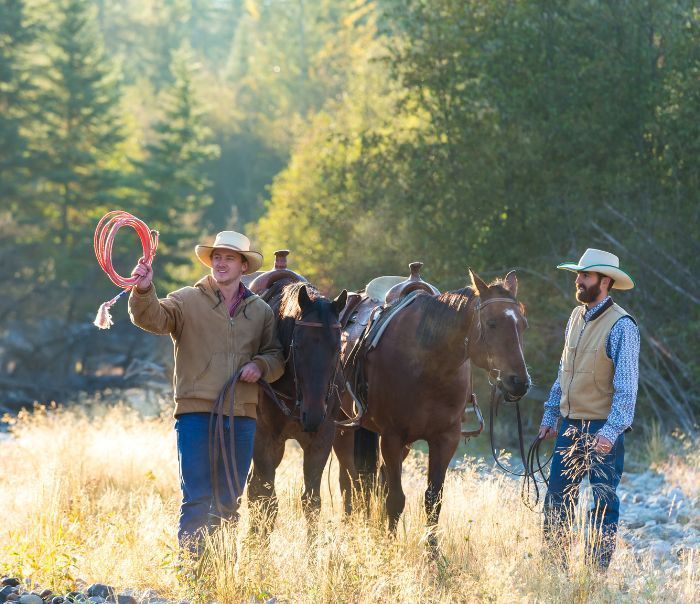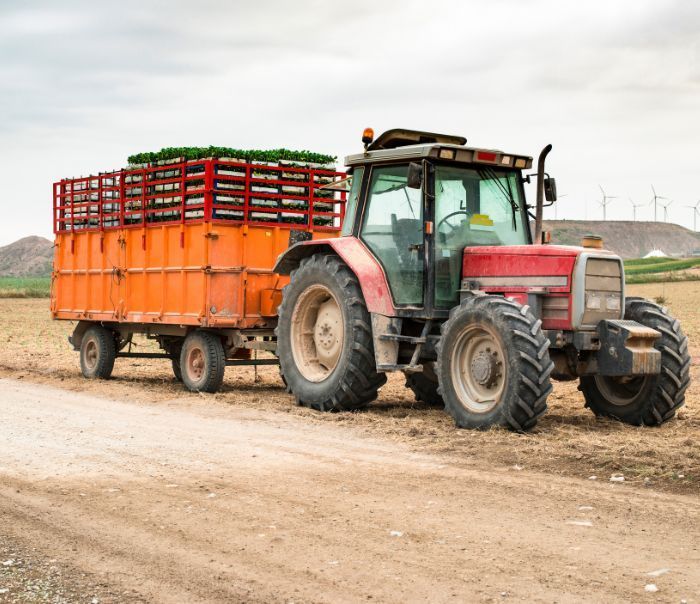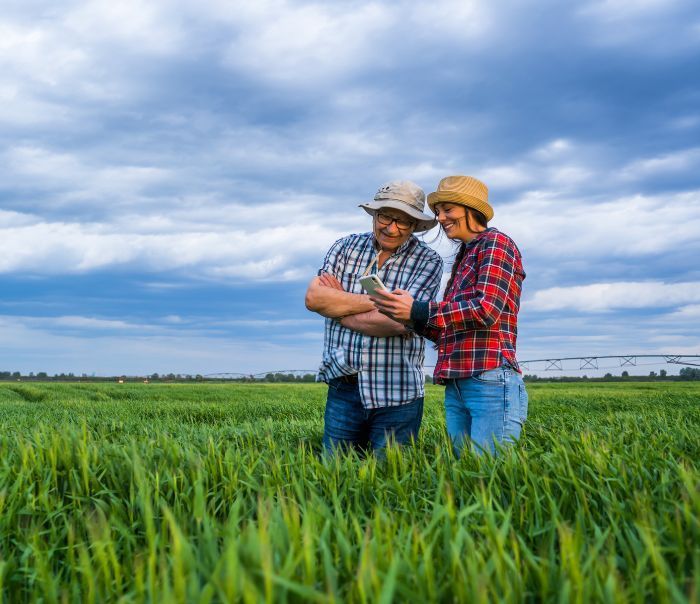Read The Latest News From Us
Insurance Mistakes That Cost Texas Ranchers Thousands During Wildfire Season

Insurance Mistakes That Cost Texas Ranchers Thousands During Wildfire Season

Wildfires are a significant threat to ranchers in Texas, particularly during the dry summer months. The vast landscapes, filled with dry grass and brush, can quickly become infernos that devastate properties, livestock, and livelihoods. While many ranchers understand the importance of having insurance, there are common mistakes that can lead to severe financial repercussions. This article explores these pitfalls and offers guidance on how to avoid them.
Understanding the Risks of Wildfires
Texas ranchers face unique challenges due to the state's climate and geography. Wildfire risks are exacerbated by prolonged droughts and high winds, making it essential for ranchers to assess their vulnerabilities. Understanding these risks is the first step in securing adequate insurance coverage.
The Landscape of Texas Ranching
The sprawling landscapes of Texas are home to diverse ranching operations, from cattle ranches to sheep and goat farms. Each type of ranch faces different risks, and the potential for wildfire damage can vary significantly. Ranchers should evaluate their specific circumstances, including the type of vegetation present, proximity to urban areas, and historical wildfire occurrences. Additionally, the presence of invasive plant species can increase fire hazards, as these plants often burn more intensely and can spread flames more rapidly than native vegetation. Ranchers are encouraged to engage in regular land management practices, such as controlled burns and brush clearing, to mitigate these risks and promote healthier ecosystems.
Climate Factors
Climate plays a crucial role in wildfire risk. Texas experiences extreme weather conditions, including heat waves and droughts, which can create ideal conditions for wildfires. Ranchers must stay informed about weather patterns and seasonal forecasts to prepare adequately for potential fire threats. Moreover, the changing climate has led to unpredictable weather events, making it increasingly difficult for ranchers to anticipate when conditions may become hazardous. This uncertainty underscores the importance of developing comprehensive emergency response plans, which should include evacuation routes, communication strategies, and resources for firefighting. Collaborating with local fire departments and participating in community fire prevention programs can also enhance the resilience of ranching operations against wildfires, ensuring that ranchers are not only protecting their livelihoods but also contributing to the safety of their communities.
Common Insurance Mistakes
Even with a solid understanding of risks, ranchers can make critical mistakes when it comes to insurance. These missteps can lead to inadequate coverage and significant financial losses in the event of a wildfire.
Underestimating Coverage Needs
One of the most common mistakes ranchers make is underestimating the amount of coverage they need. Many ranchers opt for the minimum coverage required, believing it will be sufficient. However, in the wake of a wildfire, the costs of rebuilding structures, replacing livestock, and restoring land can far exceed initial estimates.
It is essential to conduct a thorough inventory of all assets, including buildings, equipment, and livestock, to determine the appropriate level of coverage. Regularly updating this inventory is also crucial, as the value of assets can change over time. For instance, the acquisition of new machinery or an increase in livestock numbers can significantly alter the financial landscape of a ranch, necessitating a reevaluation of coverage needs. Furthermore, considering the rising costs of construction materials and labor can help ranchers avoid the pitfall of being underinsured.
Neglecting to Review Policy Details
Insurance policies can be complex, and ranchers often overlook critical details that could impact their coverage. For instance, some policies may have exclusions for certain types of damage or specific events. Failing to read the fine print can lead to unpleasant surprises when filing a claim.
Ranchers should take the time to review their policies annually, ensuring they understand what is covered and what is not. Engaging with an insurance agent who specializes in agricultural policies can provide valuable insights and help clarify any confusing terms. Additionally, ranchers should be proactive in asking questions about any changes in policy terms or coverage limits, especially after significant events like natural disasters or market fluctuations that may affect their operations.
Ignoring Additional Coverage Options
Many ranchers are unaware of additional coverage options that can provide essential protection during wildfire season. For example, policies that cover loss of income due to business interruption can be invaluable if a wildfire disrupts operations. Additionally, coverage for debris removal and reforestation can help ranchers recover more quickly after a fire.
Exploring these additional options can provide a safety net that goes beyond basic property coverage. It is advisable to discuss these options with an insurance professional who understands the specific needs of ranchers. Moreover, ranchers should also consider specialized coverage such as livestock mortality insurance, which can safeguard against unexpected losses due to natural disasters. This type of coverage can be especially important in regions prone to wildfires, where the risk of losing livestock is significantly heightened. By being informed and proactive about these options, ranchers can better protect their livelihoods and ensure a more resilient future for their operations.
The Importance of Risk Mitigation Strategies
While insurance is a vital component of wildfire preparedness, it should not be the only line of defense. Implementing risk mitigation strategies can significantly reduce the likelihood of a wildfire affecting a ranch. These strategies not only safeguard property but also protect the livelihoods of ranchers and the ecosystems they manage. Understanding the local environment and fire behavior is crucial in tailoring these strategies effectively.
Creating Firebreaks
Firebreaks are cleared areas that can help stop the spread of wildfires. By removing flammable vegetation and creating barriers, ranchers can protect their properties from encroaching flames. Establishing firebreaks around buildings and critical infrastructure is a proactive measure that can save lives and property. Furthermore, firebreaks can serve as access points for firefighting efforts, allowing emergency responders to navigate the landscape more effectively during a crisis.
Regular maintenance of these firebreaks is essential, as overgrown vegetation can quickly negate their effectiveness. Ranchers should schedule routine inspections and clear debris to ensure firebreaks remain functional. Additionally, incorporating native grasses and plants in firebreak areas can provide ecological benefits, such as supporting local wildlife and preventing soil erosion. This dual-purpose approach not only enhances fire safety but also contributes to the overall health of the ranch's ecosystem.
Implementing Controlled Burns
Controlled burns, when conducted safely and under the right conditions, can reduce the amount of combustible material on a ranch. This practice helps manage vegetation and can lower the risk of larger, uncontrolled wildfires. However, it requires careful planning and adherence to local regulations. Ranchers must consider factors such as wind direction, humidity levels, and the types of vegetation present to ensure that the burn is effective and safe.
Consulting with fire management experts can provide ranchers with the knowledge needed to conduct controlled burns safely. Additionally, collaborating with neighboring ranchers can enhance the effectiveness of these efforts, creating a more extensive network of fire management. By sharing resources and knowledge, ranchers can conduct larger, more effective burns that benefit the entire community. Furthermore, engaging local fire departments in these discussions can foster a collaborative approach to wildfire management, ensuring that everyone is prepared and informed about the risks and strategies in place.
Preparing for Wildfire Season
Preparation is key to minimizing the impact of wildfires on ranching operations. Developing a comprehensive wildfire preparedness plan can make a significant difference in outcomes during a crisis. Understanding the unique vulnerabilities of each ranch, including the types of vegetation present and proximity to potential fire sources, is essential in crafting a tailored approach to wildfire readiness.
Developing an Evacuation Plan
In the event of a wildfire, having a well-thought-out evacuation plan is crucial. Ranchers should identify safe routes for evacuating livestock and equipment, as well as designated safe zones for personnel. Practicing the evacuation plan with all staff members ensures that everyone knows their roles and responsibilities during an emergency. Regular drills can help identify any weaknesses in the plan and allow for adjustments to be made, ensuring that the evacuation process is as smooth and efficient as possible when the time comes.
Additionally, ranchers should keep an updated list of contacts for local emergency services and nearby ranchers who can assist in times of need. This network can be invaluable during a wildfire crisis. Establishing mutual aid agreements with neighboring ranchers can enhance the level of support available, allowing for shared resources such as water tanks, trailers, and even manpower to ensure the safety of livestock and property. Furthermore, ranchers can benefit from participating in local community meetings focused on wildfire preparedness, which can provide insights into best practices and new resources available for fire mitigation.
Establishing Communication Channels
Effective communication is vital during wildfire season. Ranchers should establish clear communication channels with employees, family members, and neighboring ranchers. Utilizing text messaging groups or social media can facilitate quick updates and alerts about wildfire threats. In addition to these modern methods, having a reliable backup system, such as two-way radios, can ensure that communication remains intact even if cell service is disrupted during a wildfire event.
Moreover, staying informed about local fire conditions through news outlets and official channels can help ranchers make timely decisions regarding their operations. Subscribing to local fire department alerts or utilizing apps that track fire activity can provide real-time information on wildfire developments. This proactive approach allows ranchers to assess their risk level and take necessary precautions, such as implementing firebreaks or creating defensible spaces around their property. By being vigilant and informed, ranchers can significantly enhance their resilience against the destructive forces of wildfires.
Post-Wildfire Recovery Steps
After a wildfire, the recovery process can be daunting. Ranchers must navigate the aftermath carefully to rebuild and restore their operations effectively.
Assessing Damage
Once it is safe to return to the ranch, conducting a thorough assessment of the damage is crucial. This includes evaluating buildings, fencing, equipment, and livestock. Documenting the extent of the damage with photographs and written records will be essential when filing insurance claims.
Ranchers should also consider seeking assistance from agricultural extension services or local agricultural organizations that can provide guidance on recovery efforts and available resources. These organizations often have experts who can offer advice on best practices for rehabilitation, including soil restoration and pasture management, which are vital for the long-term sustainability of the ranch.
Additionally, connecting with fellow ranchers who have experienced similar challenges can provide invaluable support and insights. Sharing experiences and strategies can foster a sense of community and resilience, helping ranchers to feel less isolated during this difficult time.
Engaging with Insurance Providers
After assessing the damage, ranchers should promptly contact their insurance providers to initiate the claims process. Being prepared with documentation and a clear understanding of the policy will facilitate a smoother claims experience.
It is important to maintain open communication with the insurance adjuster and provide any additional information they may request. This proactive approach can help ensure that claims are processed efficiently and fairly. Ranchers should also familiarize themselves with the specific terms of their insurance policy, including coverage limits and exclusions, to avoid any surprises during the claims process.
Furthermore, ranchers may want to explore additional funding opportunities, such as federal disaster relief programs or state grants designed to assist agricultural recovery. These resources can provide critical financial support to help cover costs that insurance may not fully address, such as replanting crops or replacing lost livestock, ensuring that ranchers can return to full productivity as quickly as possible.
Conclusion
Wildfire season poses significant challenges for Texas ranchers, but understanding the associated risks and avoiding common insurance mistakes can help mitigate financial losses. By taking the time to assess coverage needs, implementing risk mitigation strategies, and preparing for emergencies, ranchers can safeguard their livelihoods against the devastating effects of wildfires.
Ultimately, a combination of adequate insurance coverage, proactive planning, and community collaboration can make all the difference in navigating the challenges of wildfire season. By learning from past mistakes and staying informed, Texas ranchers can emerge more resilient in the face of adversity.
Latest News



